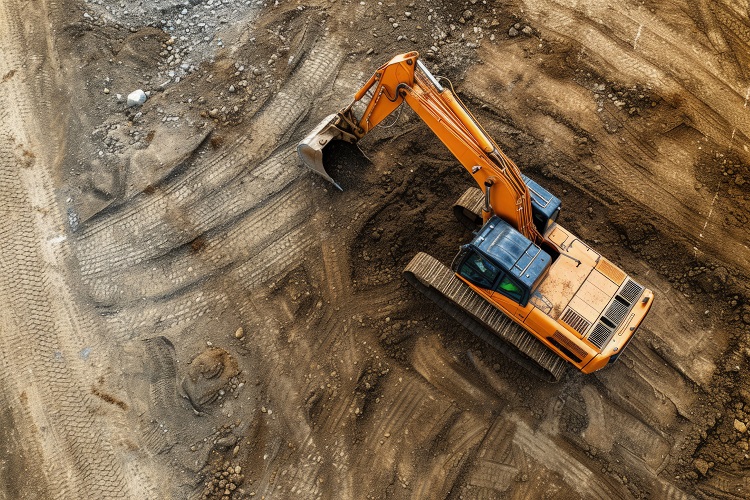
Land clearing for large projects presents unique challenges that require strategic solutions to ensure efficiency and environmental responsibility. Whether preparing land for construction, agriculture, or environmental restoration, addressing these challenges is crucial for successful project execution.
Solutions for Effective Land Clearing
Advanced Equipment and Technology
Utilizing advanced land clearing equipment and technology improves efficiency and safety. Mechanized equipment such as bulldozers, excavators, and mulchers from companies like Indepth Excavation streamline vegetation removal and debris management. GPS technology enhances precision in mapping and navigating challenging terrain, optimizing workflow, and minimizing operational downtime. This integration of modern tools not only accelerates the clearing process but also enhances accuracy, reducing environmental impact and project costs.
Strategic Planning and Site Assessment
Thorough site assessment and strategic planning are critical for overcoming land clearing challenges. Conducting detailed surveys to identify vegetation types, soil conditions, and terrain features enables project managers to develop tailored clearing strategies. Sequential clearing methods prioritize areas based on accessibility and environmental sensitivity, ensuring systematic progress.
Erosion and Sediment Control Measures
Implementing erosion and sediment control measures safeguards soil integrity and water quality during land clearing activities. Techniques such as mulching, silt fencing, and erosion blankets mitigate soil erosion and prevent sediment runoff into nearby water bodies. Protecting natural drainage systems and implementing revegetation plans restore ecosystem functions post-clearing.
Collaboration with Environmental Experts
Engaging environmental experts and stakeholders fosters proactive environmental stewardship in land clearing projects. Collaborative partnerships ensure compliance with regulatory requirements and integrate sustainable practices into project planning and execution. Monitoring and reporting environmental impacts throughout the clearing process promote transparency and accountability.
Challenges in Land Clearing
Vegetation and Tree Removal
One of the primary challenges in land clearing is the removal of vegetation and trees. Dense forests or overgrown areas require specialized equipment and techniques to safely and efficiently clear vegetation while minimizing environmental impact. Selective clearing may be necessary to preserve ecologically sensitive areas or protect wildlife habitats.
Terrain and Accessibility
Terrain variations and accessibility issues can complicate land clearing efforts. Steep slopes, rocky terrain, or wetlands require careful planning to navigate and clear effectively. Access to remote or isolated areas may necessitate the use of amphibious equipment or helicopters for transportation and removal of debris.
Environmental Regulations
Navigating environmental regulations and obtaining permits is essential in large-scale land clearing projects. Compliance with local, state, and federal laws ensures the protection of natural resources, including waterways, wildlife habitats, and endangered species. Environmental impact assessments may be required to evaluate potential effects and mitigation measures.
Debris Management and Disposal
Managing debris generated from land clearing is a logistical challenge. Proper disposal or recycling of vegetative debris, rocks, and soil minimizes environmental impact and complies with waste management regulations. Recycling options such as mulching vegetation or repurposing materials for erosion control can reduce disposal costs and environmental footprint.
Addressing land clearing challenges through strategic planning, advanced technology, and environmental stewardship is essential for achieving successful outcomes in large-scale projects. By implementing tailored solutions and adhering to regulatory guidelines, project managers mitigate risks, enhance operational efficiency, and promote ecological resilience. Effective land clearing practices not only facilitate project development but also contribute to sustainable land use and conservation efforts for future generations.